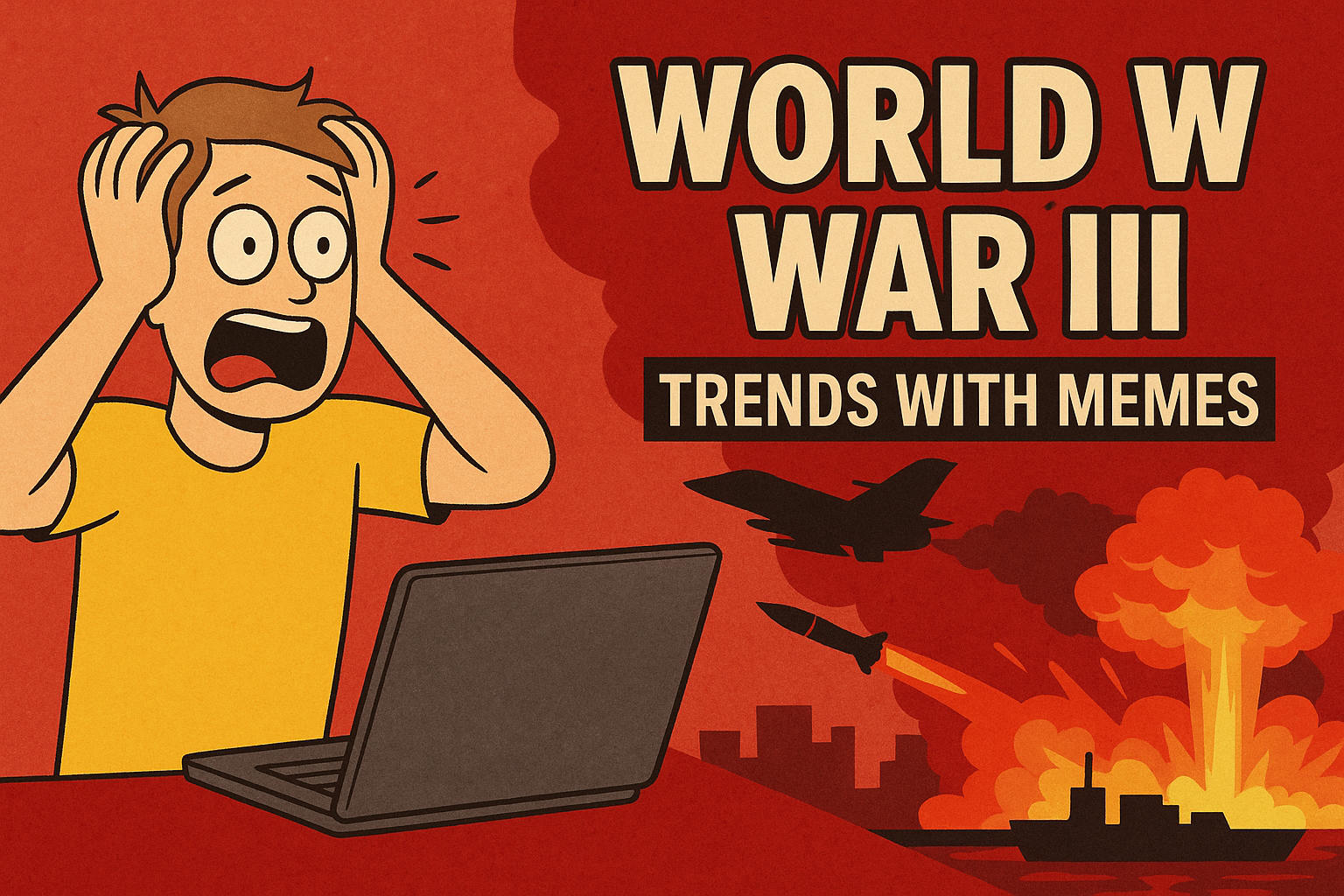World War III Trends with Memes After US Strikes Iranian Nuclear Sites
In the wake of a significant escalation in the Iran-Israel conflict, the phrase World War III Trends with Memes has taken over social media, capturing the anxieties, humor, and fears of millions of netizens. The sudden proliferation of memes following the US military’s direct involvement in striking Iran’s nuclear facilities reveals the public’s attempt to process what could be a moment of grave international consequence through the lens of satire and irony.
US Joins Israel in Escalating Conflict
The turning point in the Iran-Israel war came when the United States launched a surprise attack on three of Iran’s major nuclear sites: Fordo, Isfahan, and Natanz. The move, confirmed by both Iranian state media and President Donald Trump on his Truth Social platform, marked Washington’s full-scale entry into the conflict that had, until then, primarily featured Israeli air raids targeting Iranian missile bases and nuclear enrichment centers.
Trump stated that the United States had “completed a successful attack” and warned that Iran should not retaliate, or else face more precise and swift action. This intervention, reportedly involving B-2 stealth bombers and the use of 30,000-pound bunker-buster bombs capable of penetrating deeply fortified nuclear sites, has ignited geopolitical tensions across the globe.
Amid all this, what’s capturing equal, if not more, attention is how World War III Trends with Memes on social platforms like X (formerly Twitter) are framing this potentially devastating escalation.
Memes as a Coping Mechanism
Historically, the internet has turned to humor during dark times. The onset of the COVID-19 pandemic, economic recessions, and even moments of political chaos have all been met with meme-based responses that allow users to articulate worry, confusion, and dissent in a digestible and often humorous format.
Now, World War III Trends with Memes is emerging as a cultural coping tool for the public trying to understand the ramifications of another potential global war. Users are sharing memes that range from historically inspired jokes referencing past world wars, to satirical takes on conscription, military service, nuclear fallout, and economic collapse.
Fear Underneath the Fun
Despite the humor, there’s a layer of fear that’s impossible to ignore. Many of the memes acknowledge the sheer terror of what a global conflict would mean in the era of nuclear weapons, AI warfare, and cyberattacks. Some memes speculate about the draft returning, others joke about the price of bread soaring due to war-induced inflation, while some dive into dystopian satire, imagining “bunker life” in 2025.
The trend World War III Trends with Memes reveals a paradox: people are terrified, but they’re laughing. Not because it’s funny—but because laughter may be the only tool available to them in the face of escalating uncertainty.
Trump’s Role and Social Media Revival
Former President Donald Trump’s return to center stage has fueled this meme explosion. His announcement about the attacks and the self-congratulatory tone sparked both criticism and humor. Old posts from Trump’s X account (when he was still allowed on the platform) were dug up by users and recirculated, framing them in ironic or mocking contexts.
The hashtag World War III Trends with Memes surged in the United States shortly after his Truth Social post, and quickly spread to Europe and parts of Asia. The memes often pair old clips or photos of Trump with bombastic captions related to nuclear strikes, foreign policy, and war-time leadership—or lack thereof.
Economic Worries Reflected in Memes
Memes aren’t just mocking global leaders—they also highlight genuine public concern about how war will affect daily life. Several viral posts in the World War III Trends with Memes wave showcase economic anxiety. Themes include inflation, oil prices, cryptocurrency volatility, and global trade disruptions.
The Strait of Hormuz, through which 20% of global oil passes, has already been threatened with closure by Iranian officials. A meme showing a gas station sign with prices in the thousands of dollars was captioned, “WW3 starter pack.” Another showed a bread loaf under a glass case like a museum relic, with a tag reading: “Pre-war carbs.”
Iranian Response and Public Messaging
Following the US strikes, Iran’s Atomic Energy Organization confirmed the attacks but maintained that their nuclear program remains intact and operational. Iranian state media, meanwhile, attempted to calm the public, stating that there is “no danger” to civilians despite the severity of the US strikes.
But the memeverse isn’t buying that narrative. Iranian and international users alike have made World War III Trends with Memes a global outlet to question, critique, and lampoon official reassurances.
Global Impact and Social Media’s Role
What’s especially striking about this meme trend is how global it has become. From Tokyo to Toronto, meme creators are weighing in. Some compare current events to moments in history, while others blend pop culture with politics—such as placing Marvel superheroes or Netflix’s “Stranger Things” characters into war-themed contexts.
The meme trend also shows how real-time communication platforms have changed the way war is perceived. In the age of smartphones and social media, public reaction is instantaneous—and often ironic. The memeification of conflict doesn’t diminish its seriousness; instead, it represents a digital-age form of mass processing.
A Digital Time Capsule of Tension
Should historians of the future look back at this period, World War III Trends with Memes will offer more than comic relief. It will serve as a snapshot of collective consciousness—how everyday people digested complex, terrifying global developments in bite-sized humor.
Social media is functioning not just as an outlet, but as a real-time chronicle of unfolding history. As long as the threat of wider war looms, the memes will likely keep coming.
Conclusion
The phrase World War III Trends with Memes isn’t just a hashtag—it’s a mirror into the mindset of a world standing on the edge. As serious as the situation is geopolitically, the internet continues to respond with sarcasm, wit, and irony. It’s not just humor for humor’s sake—it’s modern-day storytelling, where memes offer both relief and reflection in the face of conflict.
As the Iran-Israel war intensifies and more nations are drawn in, the meme culture is likely to grow even more sophisticated—and perhaps even more biting. For now, the world watches with nervous laughter, hoping that the meme war remains the only one they have to fight.

Photo by Alex Andrews

One thought on “World War III Trends with Memes as US Targets Iran’s Nuclear Facilities”
Comments are closed.